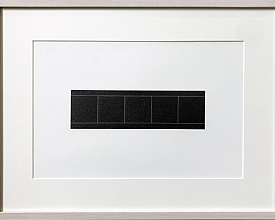Cor van Dijk (NL)
1952 (Pernis - NL)
Woont en werkt in Acquoy (NL)
Academie voor Beeldende Kunsten, Rotterdam
.jpeg)
Opstelling tekeningen en multiples, Galerie van den Berge 2022
.jpg)
Zonder titel (2022),staal, 2 delen, 15 x 12 x 6 cm - Ed. 7 (niet meer beschikbaar)
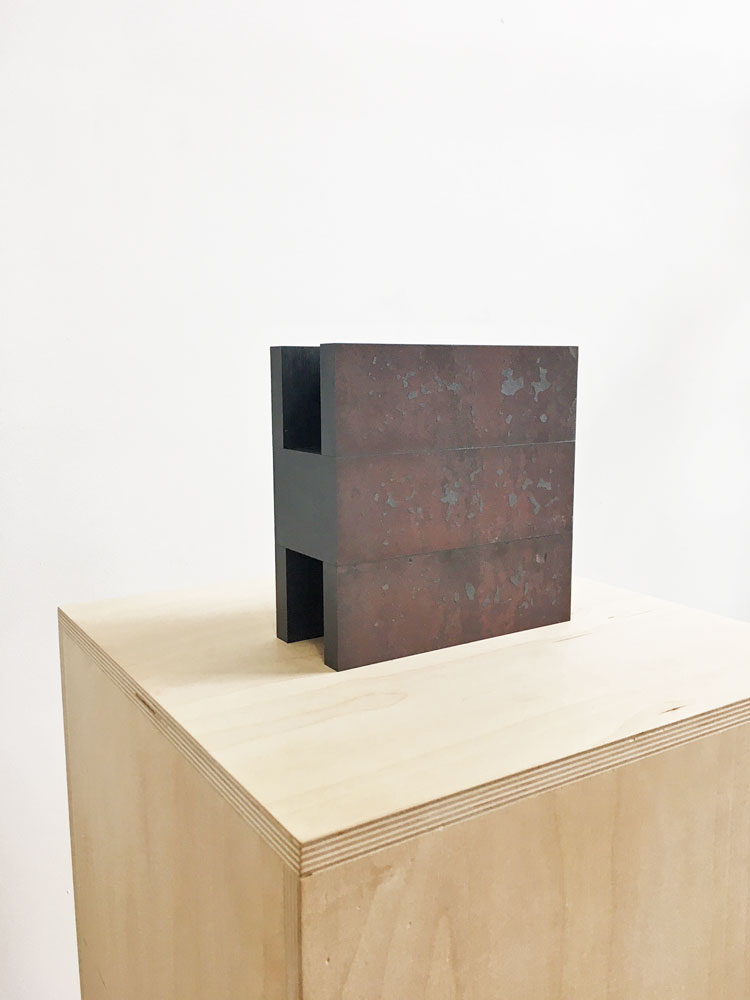
Zonder titel (2020)
Staal, 3 delen, 19,2 x 19,2 x 8 cm
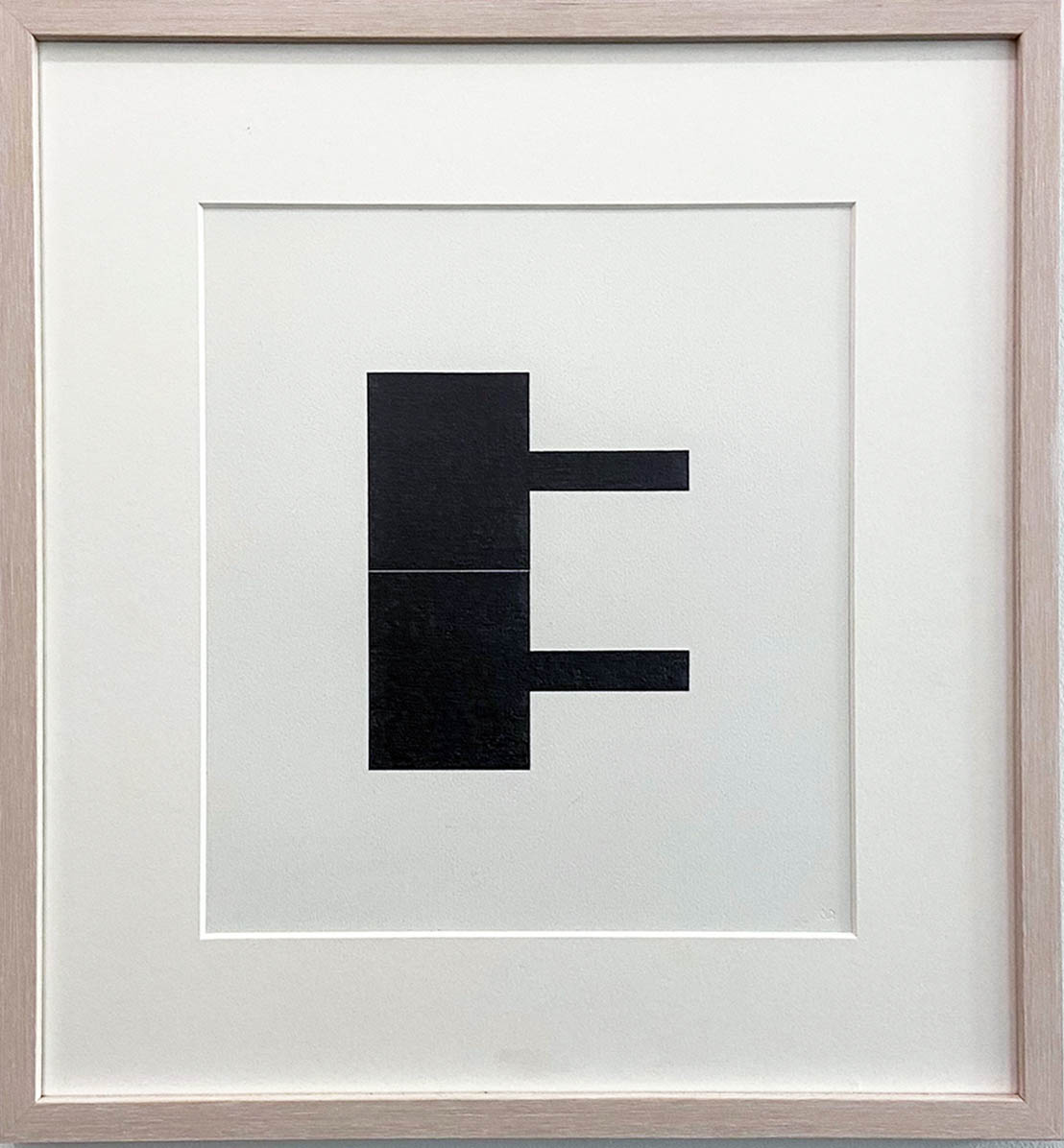
Zonder titel (2021), tekening, potlood op papier, 42,5 x 39 cm (incl. lijst)
Particuliere collectie
%20sdj.jpg)
Zonder titel (2020)
Staal, 30,4 x 30,4 x 8 cm
De stalen sculpturen van Cor van Dijk (1952 Pernis) zijn strak en geometrisch van vorm.
Het materiaal staal is vanuit de ontwerpfase onlosmakelijk verbonden met de realisatie van het werk.
De sculpturen zijn opgebouwd uit losse, precies passende delen van massief staal. Deze delen worden gesneden uit platen staal die variëren in dikte afhankelijk van het te realiseren concept. Door de diktemaat van de staalplaat als een maat in de sculptuur te gebruiken blijft de walshuid, al op het staal aanwezig, intact.
Frontaal hebben de sculpturen een ondubbelzinnig karakter. Maar wanneer zij nader worden bekeken van meerdere kanten verdwijnt deze eenduidigheid, om plaats te maken voor een niet direct te bevatten complexiteit. De naden, die het resultaat zijn van exact passende losse delen, creëren een zowel twee- als driedimensionale tekening op en door de sculptuur.
Zijn tekeningen (potlood op papier) hebben dezelfde precisie als de sculpturen.
Deze nauwkeurigheid is doorgezet bij de inlijsting.
Er is sprake van een uiterst nauwgezette positionering van de tekening ten opzichte van het kader.
De maten en kleur van het passe-partout en lijst zijn zorgvuldig gekozen.
The steel sculptures of Cor van Dijk (1952 Pernis) are sleek and geometric in form.
From the design phase, the material steel is inextricably linked to the realization of the work.
The sculptures are constructed from loose, precisely fitting parts of solid steel. These parts are cut from sheets of steel that vary in thickness depending on the concept to be realized. By using the thickness dimension of the steel plate as a dimension in the sculpture, the mill skin, already present on the steel, remains intact.
Frontally, the sculptures have an unambiguous character. But when viewed more closely from multiple angles, this unambiguity disappears, to give way to a complexity that cannot be immediately grasped. The seams, which are the result of precisely fitting loose parts, create both a two- and three-dimensional drawing on and through the sculpture.
His drawings (pencil on paper) have the same precision as the sculptures.
This precision is carried through to the framing.
There is a meticulous positioning of the drawing in relation to the frame.
The sizes and color of the passe-partout and frame are carefully chosen.
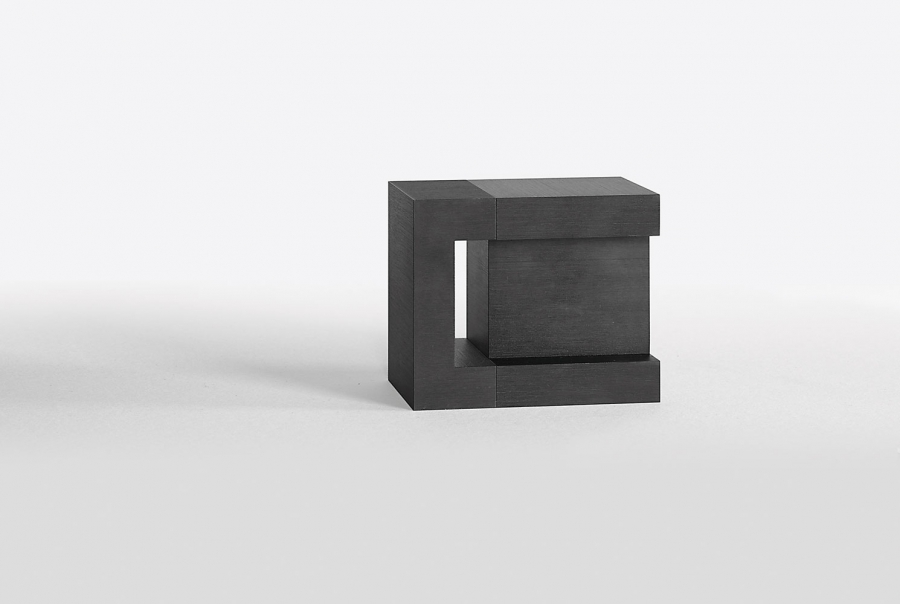
The steel sculptures of Cor van Dijk (Pernis, 1952) are characterised by clear lines and geometric shapes. From first stages of their design, the material used for these works – steel – and their realisation are inextricably linked.
To create his work, the artist uses separate sheets of solid steel, which he joins together with extreme precision. Van Dijk bases the dimensions of his sculptures on the standard gauge of the sheet metal. As a result, the mill scale found on the rolled steel is left intact in the finished works.
Viewing Van Dijk’s sculptures, one’s eyes constantly move across their surface and one’s attention keeps shifting from areas of open space to sections that take up space. The seams between the different segments play a key role in the works, since they lend a sense of scale to the mass of steel and define its different volumes. The artist strives to show interior space – its layout, possible compartments, the spaces between the segments and the massive quality of the steel itself. The different dimensions all interact with one another. Ultimately, this is also what gives the sculptures their specific presence: the precise handling of volumes and the perfect connection of individual sections in space.
Each newly-realised concept is intended to bring even greater clarity to the context of the preceding work – while also pointing ahead, suggesting new concepts that are still waiting to be developed.
Viewed head-on, Van Dijk’s sculptures seem quite unambiguous. But when you observe them from a variety of angles, this clear-cut quality makes way for a new complexity that takes more time to fathom. The seams created by the careful positioning of the individual metal sheets form a two- and three-dimensional drawing – both across the sculpture’s surface and within it.
Over time, the artist’s explorations and realised projects have yielded a unique generative system in which each evolution, each addition and each realisation charts its own course, fulfils its objectives and ensures that the whole ‘makes sense’ – for the moment, at least.
A sculpture’s realisation is the final stage of a long process. The artist needs to wait until the entire design process has been rounded off and the concept is fully developed. The different dimensions all need to be determined with millimetre accuracy. In this method of working, any further interference during or after the sculpture’s production is out of the question. This puts considerable pressure on Van Dijk’s work process – which he sees as a good thing, incidentally.
Van Dijk’s most recent sculptures comprise a single segment. The location of the open space and its dimensions determine the scale of the work as a whole. The result is an object in which mass (matter) and open space interact more intensively than ever before. In technical terms, the steel used for the sculptures shows no traces of machining or processing. Thanks to their mass, the open space and the interaction of these two elements, these tranquil objects seem to speak directly to the viewer.
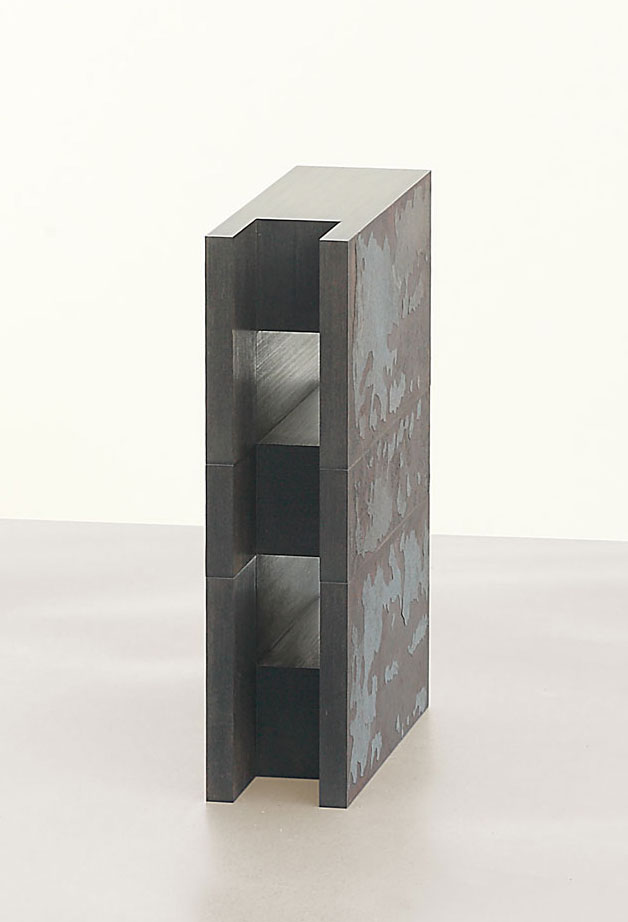
Publicaties (selectie)
- Salon – Bouw & Beeld, catalogus tentoonstelling Haagse Kunstkring, Den Haag, 2016, p 4-5
- Concreet 2.0, catalogus tentoonstelling Pulchri Studio, Den Haag, 2016, p 8-9
- Abigail Holland Kocka, tekst: Dr. Péter Emód, catalogus tentoonstelling Duch Cube II Galerie Abigail Boedapest (H) 2013, p 10, 11
- Pulchri-blad, tekst: Ingrid van Santen, 2008-5, p 14, 20-22
- Cor van Dijk – In Staal, 1976 – 2006, uitgegeven in eigen beheer in samenwerking met Galerie Nouvelles Images te Den Haag
- Galerie im Winter Bremen 1977-2006, tentoonstelling 3 m unter Normal Null - 12 Künstler aus den Niederlanden, Städtischen Galerie Bremen (D) 2006
- Bijzondere munten 2004-2005, Geldmuseum i.o.v. Ministerie van Financiën 2006, p G
- Beelden, tekst: Piet Augustijn, Stg. Thoe Schwartzenberg, 2006-4, p 11
- Moderne favorieten, aanwinsten Moderne Kunst 1999-2004, Museum Het Valkhof 2005
- MOTIVA, Austria Center Vienna, International congrescentrum (UNO), Vienna (O) 2005, p 14, 49
- Cor van Dijk, R. Reiling, S. Mostard, L. Rijnboutt, onderzoekopdracht Hogeschool Larenstein 2005
- Lohn der Arbeit, catalogus tentoonstelling Gelsenkirchen (D) 2005, p 79
- Pulchri-blad, tekst: Paul Toby, 2004-4, p 10
- De bomen van Pythagoras; geconstrueerde groei, catalogus tentoonstelling Mondriaanhuis, Amersfoort, 2003, p 35
- Beelden in Gouda, kunst van de 20e eeuw, Gemeente Gouda, 2001, p 49, 108
- Beelden dichterbij, Gemeente Albrandswaard, 2000, p 8, 35
- Staal in Beeld, Het Oude Slot Heemstede 2000, p 18, 19
- Het Oog Voorbij, Galerie Nouvelles Images 1960-2000. Over de liefde en de lasso, tekst Truus Gubbels, 2000, p 66, 97-115
- Moderne kunst, keuze uit de verzameling Museum Het Valkhof, tekst: Daan van Speybroek, overzichtstentoonstelling opening Museum Het Valkhof 1999, p 11, 196-199
- De taal van staal, tekst: Piet Augustijn, catalogus tentoonstelling Gorinchem 1998, p 91
- Waar ligt de grens? Kunstmanifestatie Buren/Geldermalsen 1996, p 30
- Cor van Dijk, tekst: Daan van Speybroek, catalogus tentoonstelling Biënnale Gelderland, Arnhem 1994, p 13, 40, 53, 57, 58, 82
- Konkret Hollandsk, tekst: Huub Mous, catalogus tentoonstelling Sonderjyllands Kunstmuseum, Tønder (DK) 1992, p 386, 387
- Cor van Dijk, tekst: Ankie de Jongh-Vermeulen, catalogus tentoonstelling Centrum Beeldende Kunst Rotterdam 1987
- Vrij Nederland, tekst: Ella Reitsma i.v.m. Prix de Rome tijdschrift 1985, p 20-28
- Beelden in Rhoon, tekst: Rob Wolthoorn, catalogus tentoonstelling 1985, p 12, 48, 49
- Beelden aan de Linge, tekst: Carel Blotkamp, catalogus tentoonstelling 1984, p 22, 23
Terug naar overzicht


